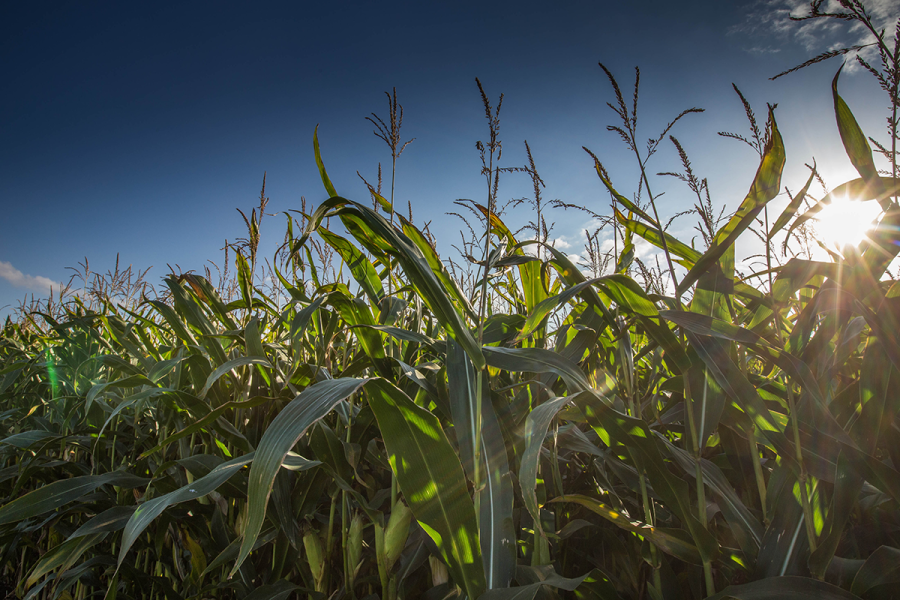Unsatisfied with the maize strip till cultivator options on the market, a Devon farmer set about trying to team up with a manufacturer to design and build a specialist machine and has subsequently produced some of the “best maize ever”. CPM finds out more.
All the elements are pretty simple, but when it comes together, it just works
By Charlotte Cunningham
When it comes to shopping for machinery, most growers have a list of features they’d like to have – whether that be a certain drive system or a working width, or even for a new bit of kit just to be sporting their favourite livery.
However, ticking the boxes for all of these ‘must-haves’ isn’t often achieved. Such was the case for Devonshire farmer, James Lee, who couldn’t find what he was looking for on the current market, so set about designing his own bit of dream kit…
James runs a mixed farming partnership in mid-Devon with his father, Nick, and brother, Jonathan. The farm is home to a South Devon suckler herd and grows combinable arable crops on a wide rotation. This is as well as operating a thriving contracting business.
The farm has practiced minimum tillage for quite some time, but with more work required when planting maize, James was keen to find a solution. “I’ve been really interested in strip tilling maize for the past 10 years, largely on the back of the success we’ve had with direct drilling our cereals.
“Historically, our maize had always required a more intensive approach which just didn’t seem necessary. And with regards to our direct drilling work, the maize seemed to be affecting soil structure and impacting its ability to take the rain. This meant that when we had to get maize off in a wet autumn, it was leaving a mess in the soil, so we couldn’t direct drill after maize.
“I realised that the root cause of this was how we were putting the maize in – not the direct drill – it all came down to that damage to the soil in the autumn.”
Having seen strip tillage practiced on maize in the US, James thought this might be the solution to his problem. “It appeared to optimise establishment by cultivating the soils just in the rows – or the strips – and then placing fertiliser in those rows too which just seemed to make sense.”
Keen to switch to a less intensive way of establishing maize, James trialled a few machines on farm which had originated from the States. “These were strip till cultivators which relied on a tine – or shank as the Americans called it – to cultivate the row, but there were no secondary parts to the machines to adjust how they cultivated. So if that tine didn’t do the job you’d have to turn around and do it again and we found we were having to do two or three passes – so you were losing the advantages of a more minimal approach. They just didn’t do quite what I hoped they would.”
So about four years ago James began researching different types of kit and sketching out a few ideas of his own, when he had the idea to propose collaborating with a UK manufacturer to bring this vision to life. “Grange Machinery was who I had in mind as I really liked their build quality, and the principles of its low disturbance soil toolbar technology was almost half of my idea. It seemed like a really good opportunity to marry up what they already had with what I thought would work.”
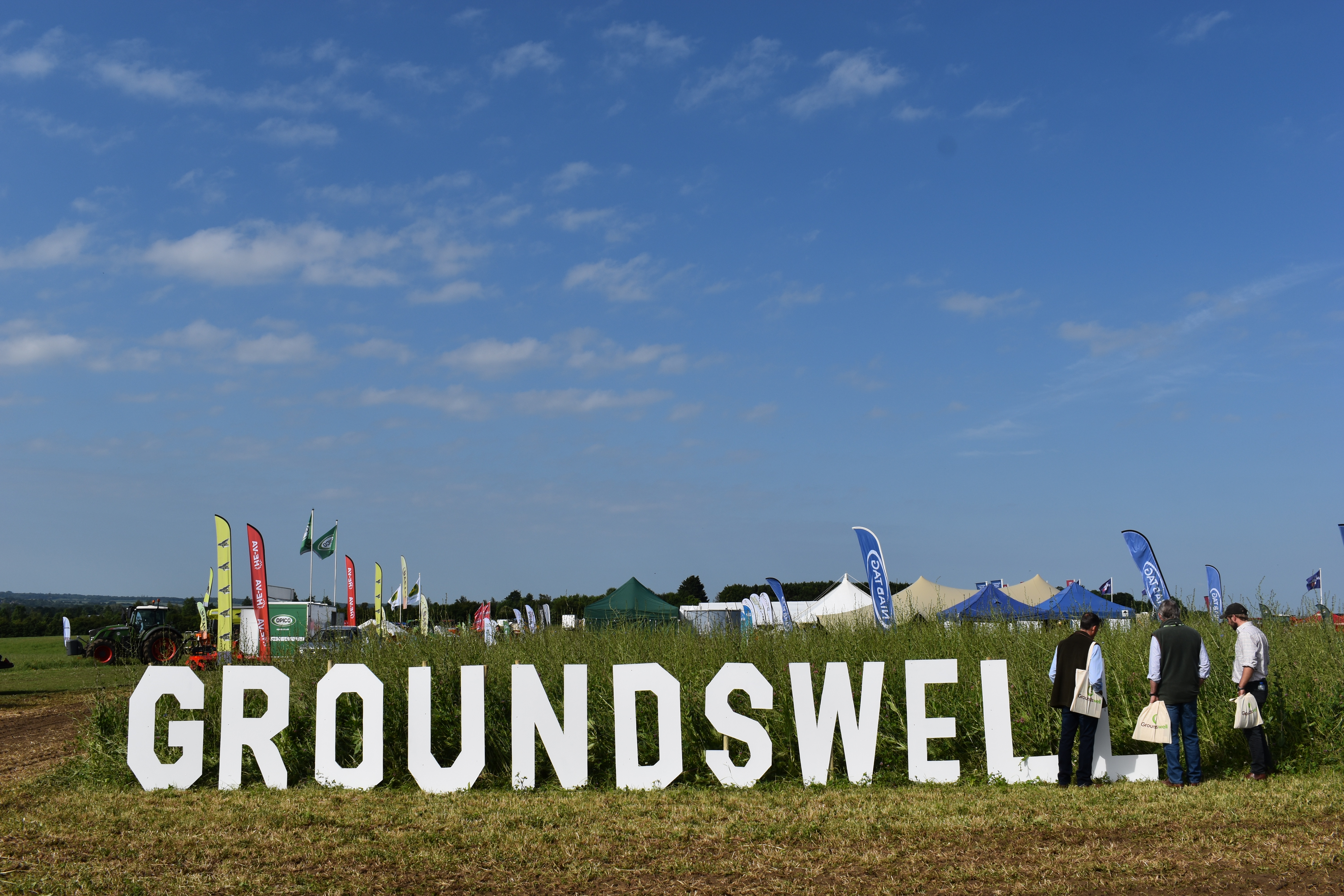
James pitched his ideas for a new machine to Grange Machinery at the 2019 Groundswell event.
James took his proposals to Groundswell in 2019 where he met with Grange’s Rhun Jones to pitch his plans. “I laid all my ideas and designs out and they were really receptive,” he laughs. “We spent about an hour chatting through things and I think my suggestions came at the right time for them.”
Rhun concurs and says this was a route the firm were hoping to go down. “At the time, we’d already dipped our toe in the water with regards to creating system of establishing maize via a one pass machine with our low disturbance toolbar. This machine was designed for farmers practicing reduced tillage, but also requiring a shallow to medium depth subsoiler as a result of compaction issues when working at depths of 15-20cm.
“I was interested in pushing this forward, so when James came along and explained his challenges, it seemed the perfect opportunity to create something that genuinely improved establishment for maize growers.”
A few meetings, more sketches and several designs later, the first prototype arrived on farm in Devon in 2020 – just a year after those initial Groundswell discussions.
James says Grange kept him really heavily involved throughout the whole process, meaning there were few tweaks to make to the prototype. “Essentially, we just beefed it up – making it bigger and stronger and Rhun added in a couple of really clever hydraulic adjustments so that we can independently adjust the disc coulter part of the machine for trash clearance. We also put a larger roller on the back – the previous one wasn’t up to it and was a bit small for what we wanted.”
With these changes made, the final version was ready for 2021 and James says he produced some of his “best ever” maize that year. “We had some really big crops last year – 50t/ha crops.”
And there have been improvements to the soil, too. “When the crop comes off, the soil is in a better condition than it was before. Maize gets a bad name but it’s a really good break crop if we can learn how to grow it well. For example, in 2021 we had 180mm rain and planted from May up until the end of June and the crop was still really pleasing. It’s proved to be really adaptable to whatever the season.
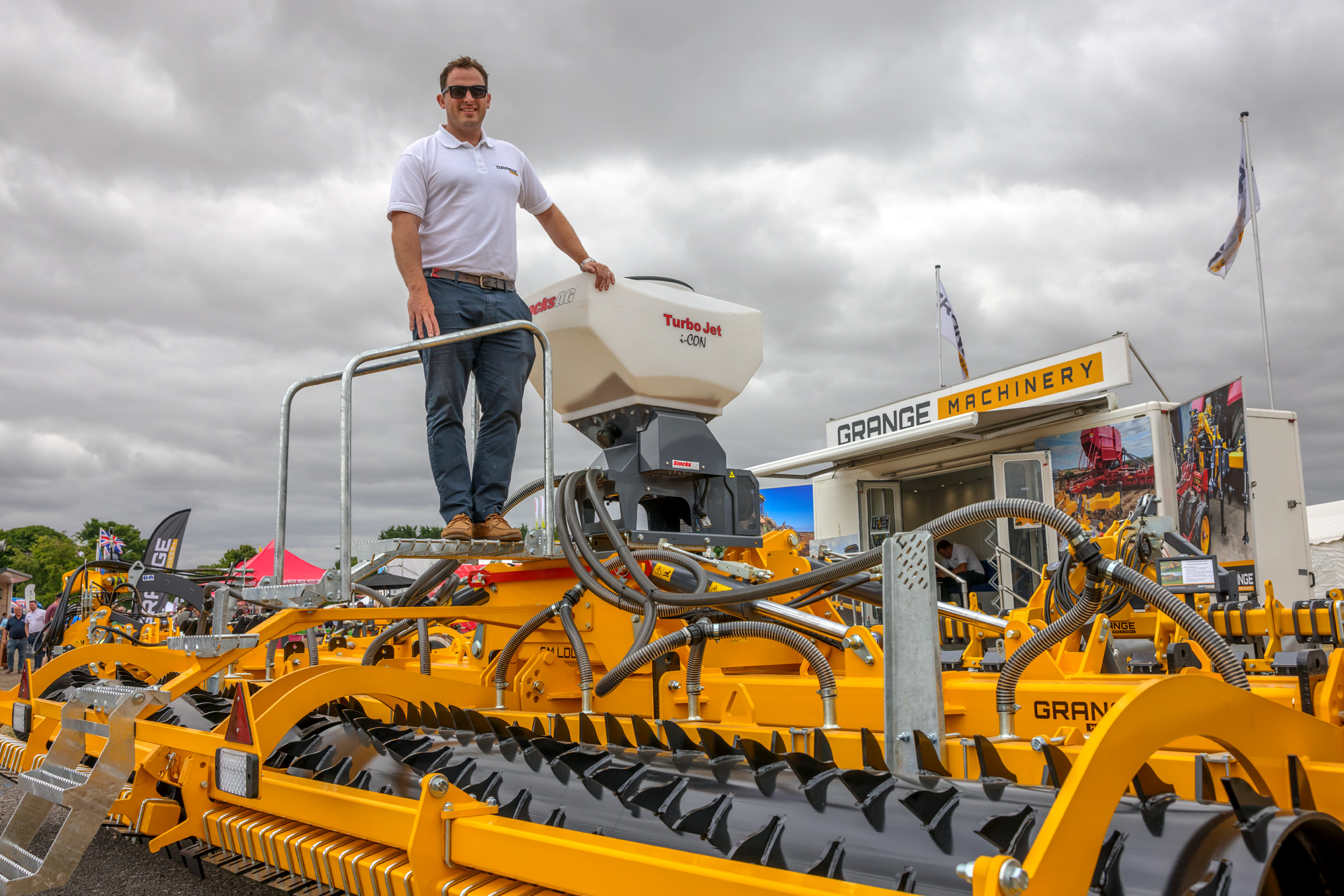
Grange already had experience with creating a system of establishing maize via
a one pass machine with its low disturbance toolbar technology, says Rhun Jones.
“When we came back to drill the wheat, all the fields were so much more level and the water had infiltrated, meaning the harvesting kit didn’t make a mess and the direct drilling of the following crop was easy.”
So what exactly does this one-of-a-kind design look like and how does it work? Walking through the machine head-to-toe, the first feature to note is the Grange soil loosening tine/leg. “I’ve gone for 500mm spacings, so when the tine is running at 20-22cm it’s going to lift the whole profile – rather than 750mm spacings, which is standard for maize but leaves a little bit of ground in the middle which doesn’t getting lifted. The crop canopy also closes in quicker, which I think is an advantage.”
Behind the leading tine are two discs which catch any soil that comes off the tine and keeps it in the strip. After this are two staggered fluted/wavy discs which create a mixing action in the strip to cultivate the soil. This is followed finally by a large ‘zonal’ Guttler press roller which consolidates and breaks down any remaining clods in the strip/row. “It leaves a lovely finish and tilth behind that tine,” adds James. “So in a nutshell, it lifts the soil, breaks the pan and any surface compaction, and then cultivates that soil in the row.”
Behind the leg, James is also placing fertiliser. “As it’s being placed in the row, there’s an opportunity to reduce the amount of fertiliser we apply because it’s being more efficiently placed rather than broadcast. Overall, I’ve estimated about a 30% cost saving in cultivations and fertiliser. All the elements are pretty simple, but when it comes together, it just works.”
After this, a precision maize drill follows. “With two passes, it gives some flexibility to soil conditions,” adds James.
Another year on, and another year of work under its belt, James says there are now a few further tweaks that will be added to the system. “Something I’m thinking about is potentially staggering the tines to make it easier to pull.”
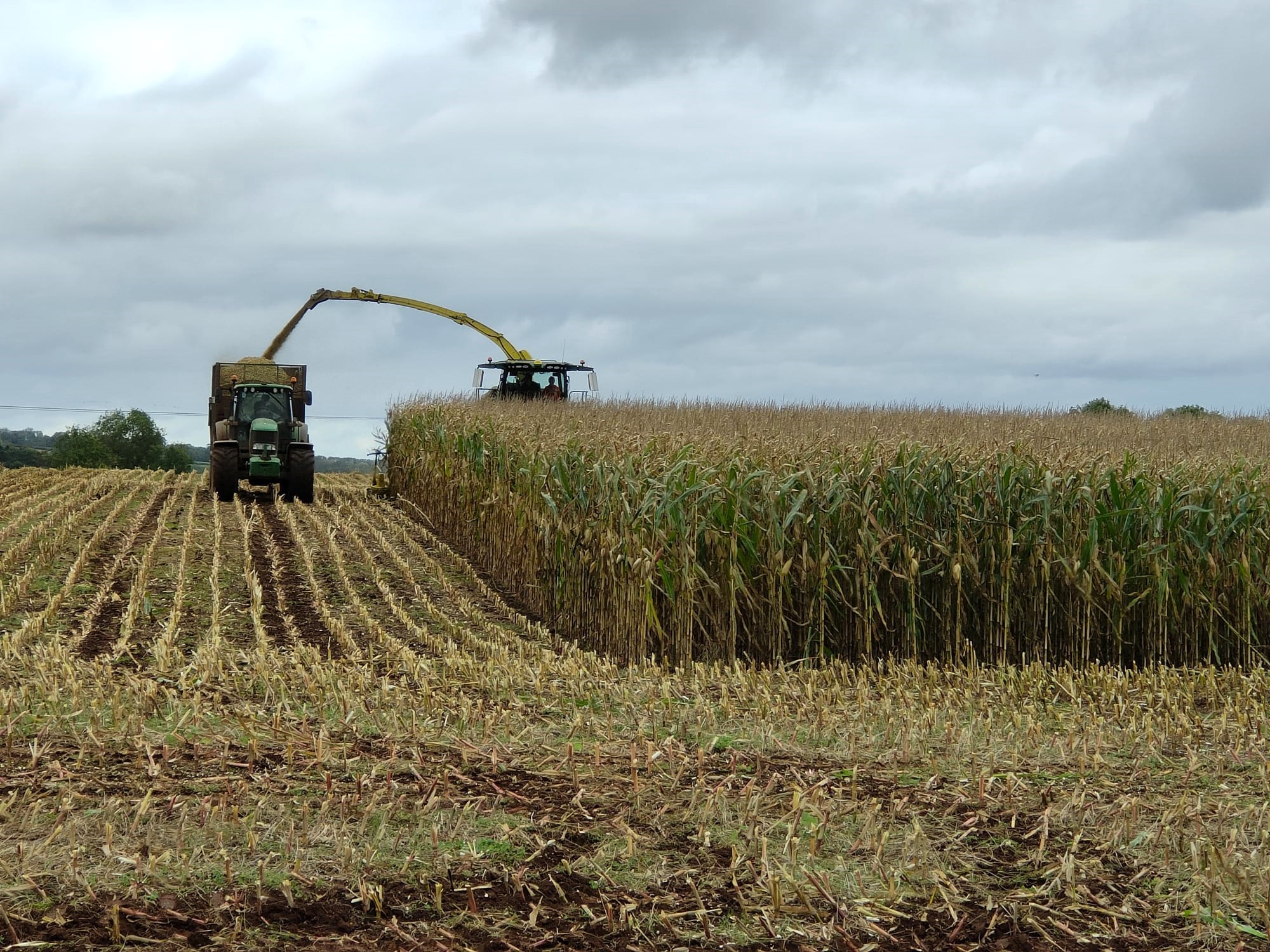
The 2021 maize crop established with the new strip till machine.
Rhun adds that having ‘real-time’ commercial feedback from James has been invaluable in the development of the machine. “For me, this was the most interesting part of the project – getting live feedback through the development stage from someone using it commercially, alongside the testing we were doing ourselves. We couldn’t have asked for a better set up.”
While the unprecedented hot weather this season hasn’t so far made for great maize growing across the country, James says it’s actually provided a great learning opportunity in terms of how to use the strip till system. “It has been interesting to see which fields have grown the best with the system – and which haven’t – and understanding why that is. It has been a very dry spring and early summer and some of the soil nutrition we put on hasn’t become available, like the farmyard manure. A piece of kit isn’t a magic wand and I think this year has actually proved that the results are there to be had if you can get the soil and the whole system working right,” he explains.
“We’ve learnt that we need to get more fertility below the crop, so we’re looking at liquid options over solid, for example. It’s not going to be win-win every year but there’s always something to learn. It has got to be a systematic approach.”
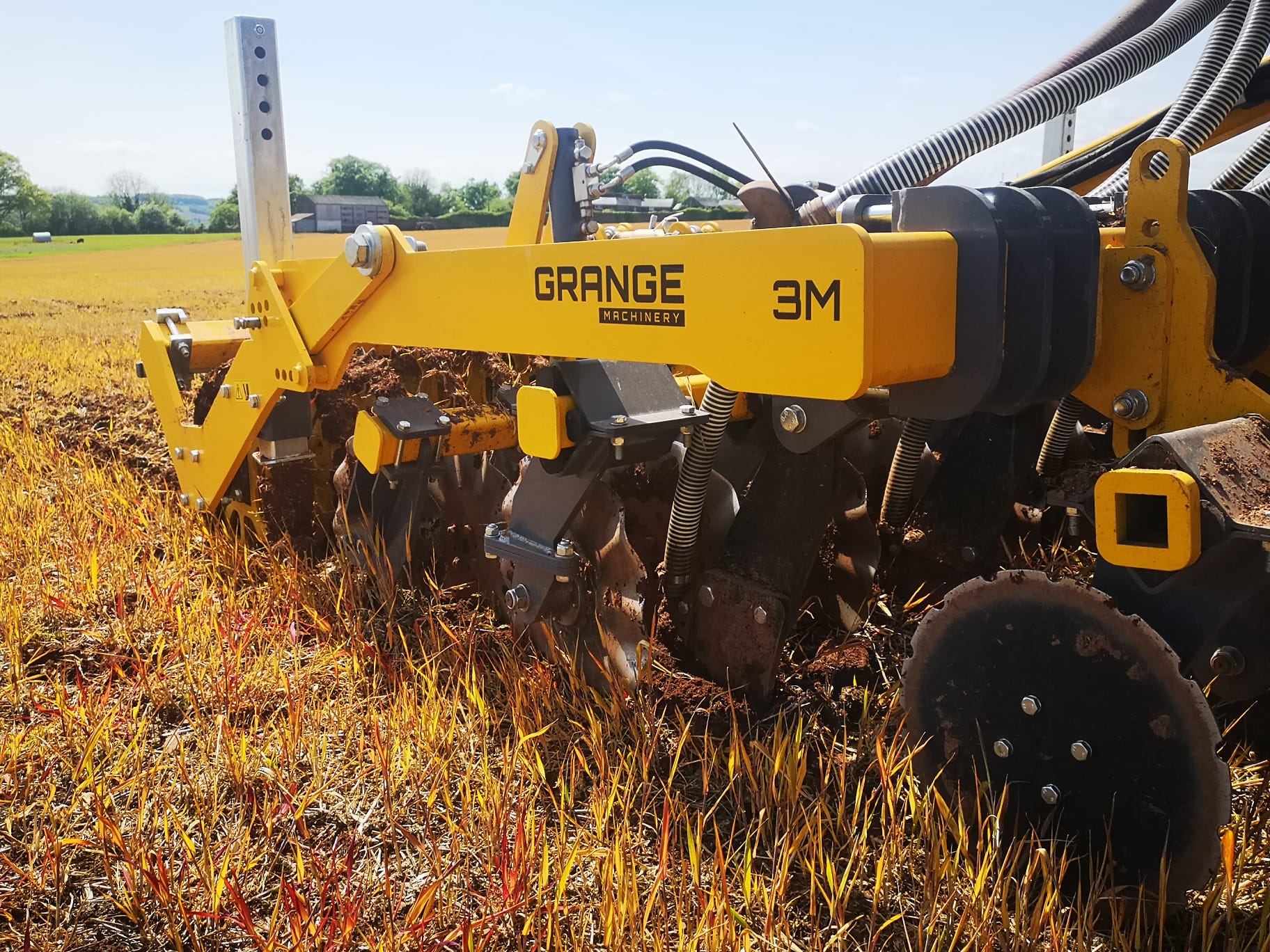
A key feature of the cultivator is Grange’s low disturbance leg and rear cultivation system to aid in the soil loosening process.
And it’s not just James who is pleased – his customers are too. What’s more, James says there has been a lot of interest from farmers across the country after he took the strip till machine to various shows this summer. “We took it to the Royal Cornwall and Devon County show recently and the interest was huge – I think it’s just the right time for this kind of tool. There are other manufacturers coming onto the market with similar options now, but I think this offering is unique.”
The success has been so much so that Grange is preparing to launch the strip till machine commercially at the end of the year, says Rhun. “The plan of attack is to go straight into a production model this autumn/winter and then to showcase the unit for the first time commercially at the LAMMA event in January.”
James adds: “I’m really pleased that we’ve been able to test it so vigorously in a real-world situation and under different soil types – and essentially, given it a really good working.
“It’s been great to be able to help develop a real commercial solution to a real farmer problem – and it works.”
Science on soils
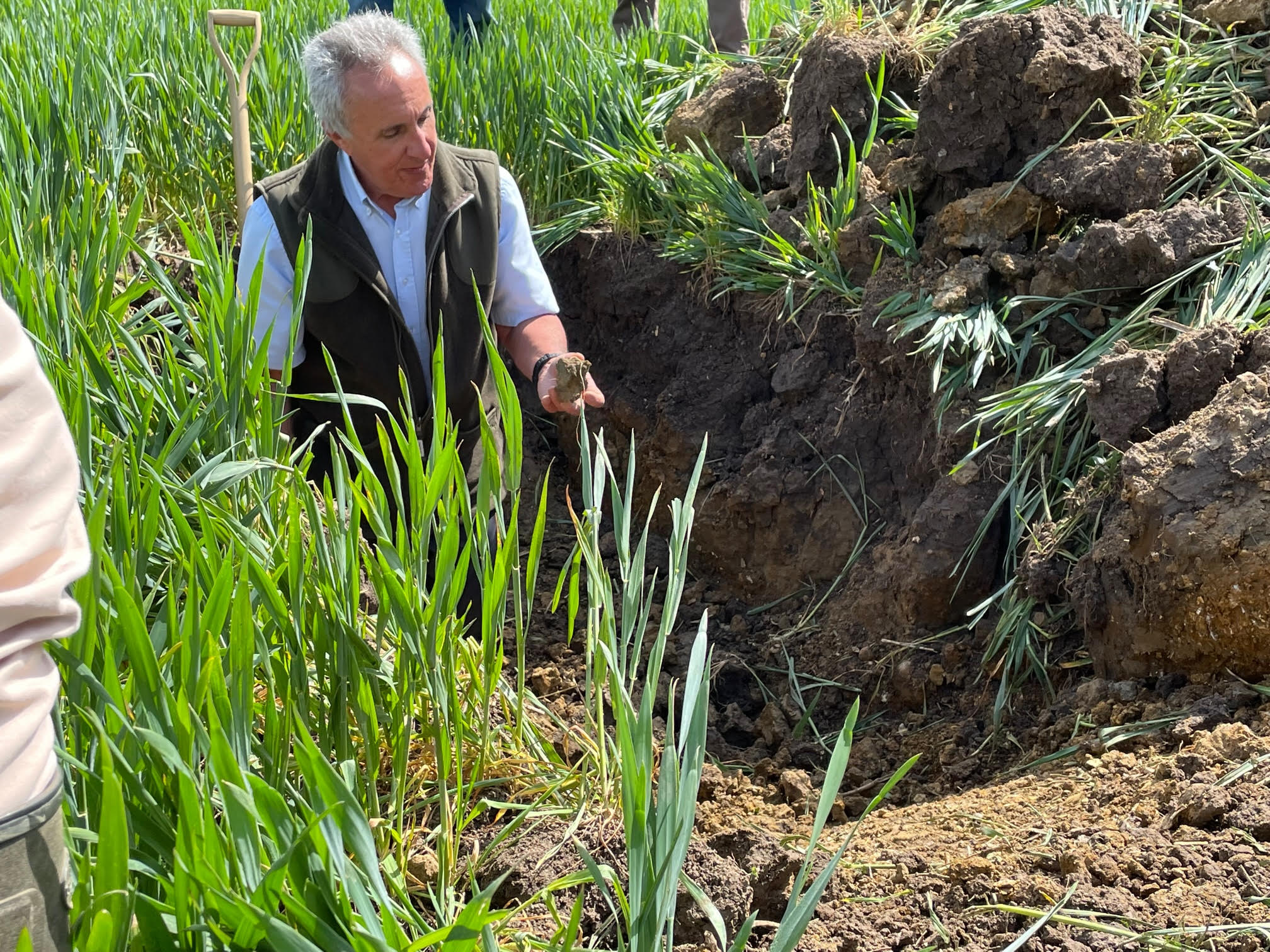
Growing maize to prevent soil damage requires taking a holistic view of the whole rotation, says Philip Wright.
With improving soil structure and health a key driver behind James’ innovation, Philip Wright, independent soil management specialist, explains the science behind adopting a strip tillage system and how it can benefit farmers’ most valuable asset. “Some farmers use strip tilling as a stepping-stone into direct drilling. This might be particularly useful on soils which are not totally self-structuring or a bit prone to slumping. It may also be useful in areas with more slopes or those exposed to more intensive periods of rainfall – as is the case in places like Devon.”
Philip explains that a combination of sloping soils and heavy rainfall often causes run-off. “As such, moving to a strip till approach minimises the amount of unnecessary tillage and can help create support columns in the soil. These are really important for helping mitigate against harvest trafficking, for example.
“The zone itself is more structurally intact too when strip tillage is used – more like a natural column soil structure would be. As a direct result of that, if you can ensure you’ve got a combination of these unmoved columns, and between which you’ve got optimum placement and structure for the seed, so you can start to create a situation where you’re beginning to improve the stability of the soil.”
This is the case for cereals, but maize does require working a bit deeper. “Maize has got quite extensive roots, but they are quite lazy and do need that deeper working,” explains Phil.
Which is where James’ strip till cultivator comes in. “It’s exactly the same principles as if you were sowing cereals, but just requires a little more thought on the kit you use when it comes to cultivating for maize – considering depths and centres, for example,” he adds.
Philip strongly agrees with James’ sentiments and says that while the right kit is vital, taking a whole system view is essential for getting the best from maize, without hampering soil condition. “As you build more resilience into soils – which often comes as a result of doing less intensive cultivations – you start to see the benefits of that natural soil structuring; those vital support columns.
“If you don’t unnecessarily disturb soils then those pathways that are created by roots and natural, continuous pores going through the soil, the soil will start to become more stable and natural binders are created which help with issues such as run-off or compaction issues left at harvest time.
“Then, because the soil is in a better condition, you can start thinking about doing even less cultivation wise and perhaps changing the kit used – which is why strip tillage is a useful stepping-stone.
“Putting this into context with maize, specifically, it’s a good break crop, but it can be destructive to soils. However, if soils are more resilient, then the maize will be kinder on the ground. It has to be a systematic, holistic approach – not just making decisions on one bit of kit, one crop or one year.”
This article was taken from the latest issue of CPM. For more articles like this, subscribe here.

